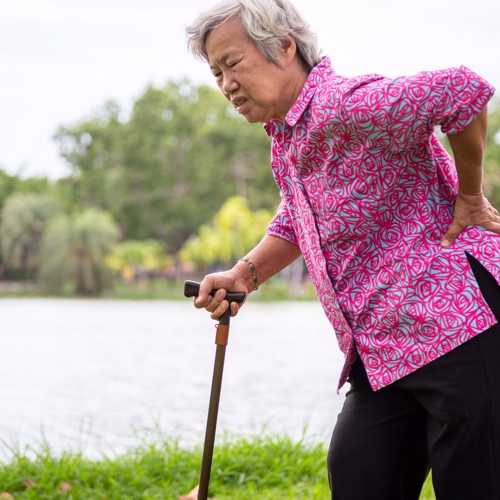Suspected OA Hip: is an X-Ray a useful investigation?
NO
PHARMACEUTICAL INFLUENCE
Suspected OA Hip: is an X-Ray a useful investigation?

Morning clinic brings Stan, a 48 yr old man with hip pain. ‘Doc I’ve got a dodgy hip. It’s been playing me up on and off for months. Can I have an Xray?’ Your history and examination suggest Stan has osteoarthritis of the hip. But is an Xray a useful investigation, either to confirm diagnosis or to help assess severity and triage referral?
NICE recently issued its update ‘Osteoarthritis in over 16s’ in October 2022. In it they stress that osteoarthritis is a clinical diagnosis. They recommend to diagnose osteoarthritis clinically and without imaging in people who are 45 or over and have activity-related joint pain and have either no morning joint-related stiffness or morning stiffness that lasts no longer than 30 minutes. We should consider imaging only if there are atypical features, or features that suggest an alternative or additional diagnosis such as a history of recent trauma, prolonged morning joint-related stiffness or rapid worsening of symptoms or deformity. And of course if there are any red flags, such as a hot swollen joint or any concerns about infection or malignancy.
So, you explain to Stan that he has OA and reassure him that he does not need an x-ray.
He’s not buying it ‘No offense doc, but surely an x-ray would help to know for sure that this is arthritis? Anyway, I want to know how bad it is.’ So, would imaging give Stan the definitive diagnosis he wants?
The NICE evidence review concluded that imaging findings do not always correlate well with the patients symptoms, particularly in the early stages of OA. Osteoarthritis is a clinical syndrome which may or may not have imaging features associated with it. Imaging may delay management and is unlikely to add to diagnostic certainty.
This is supported by a recent study published in the BJGP which looked at the association of hip pain with radiographic OA. Cross sectional analysis of the Dutch cohort study ‘CHECK’ looked at 45-65yrs old patients within 6 months of presenting to their GP with either hip or knee pain. Patients with any other pathological condition that could cause hip or knee pain were excluded (remember the importance of considering x-ray if clinical suspicion of an alternative diagnosis in the NICE guidelines). Signs of radiographic osteoarthritis were present in 13.3% (n=105/789) of painful hips but also 9.5% (n= 113/1193) of pain free hips. They concluded that in patients newly presenting to their GP, hip pain was only moderately associated with radiographic OA. Further, there was only modest difference between presence of radiological signs in painful and pain free hips, meaning the radiological signs were often not aligned with symptoms.
So, will Stan (and indeed most GPs!) be convinced by this major change in management? Maybe, but in the meantime, we need to stress the focus needs to be on management. Guidance on management of OA can be found in this handy visual summary. Core treatment includes therapeutic exercise and, where appropriate, weight management alongside support and information. Importantly Stan should be advised that exercise may be painful initially, but in the long run adherence to an exercise plan should reduce pain and improve function. Trusty paracetamol is no longer recommended as there is no strong evidence of its benefit (anyone else feel their patients have been saying this for years?). Instead, consideration of short-term therapy with topical or oral NSAIDs is recommended where analgesia is needed.
Dr Laura Darby
1st December 2022
Join us at one of our upcoming courses or live webinars

Recent NB Blogs
Need an immediate update? – all our courses are available on demand
Did you find this useful?
You can quickly add CPD to your account by writing a reflective note about the Suspected OA Hip: is an X-Ray a useful investigation? post you've read.
Log in to your NB Dashboard and use the 'Add Reflective Note' button at the bottom of a blog entry to add your note.

